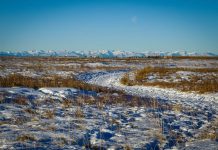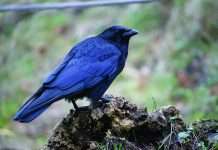Grazers have played an important part in controlling taller, nuisance weeds such as thistle and common nettle. The first recorded land occupancy of Nose Hill was an 88,000-acre lease granted in 1882 and the activity continued in some form until 1989. By 1910, the City’s expanded boundaries extended as far north as 48 Avenue. Residential development rapidly occurred north of 16 Avenue after the war. From 1945 to 1959 it began to approach Nose Hill. By 1959, development was as far north as Capri Avenue and east of 14 Street and as far north as 56 Avenue. When Nose Hill was still privately held land, more people were cutting fences and trespassing north of John Laurie Boulevard.
Aerial photos reveal various human uses and their effects on Hill activities. There were many old 1959 vehicle trails, with severe damage on slope crests and the top of hummocky areas. Although cultivation of Nose Hill was suspended in 1979, other uses led to an extensive trail network in almost all areas of the Hill. A six-foot high mesh fence was built along part of 14 Street and John Laurie Boulevard in the 1970s. There were vehicle impacts north and south of Porcupine Valley. The heavily scarred hillside due west of Berkley Gate parking lot was a challenge from dirt bikers and trucks, as were the ravine slopes and trails up the north face of the bluff that rises from the south side of the Valley. Although regeneration was slow, scarring of the Hill by vehicle traffic was reduced. Much of what is now the south portion of Nose Hill Park was owned by the City in 1982, when AGT developed a three-mile utility easement in the Park for a conduit and cable between MacEwan Glen and the new Edgemont development.










